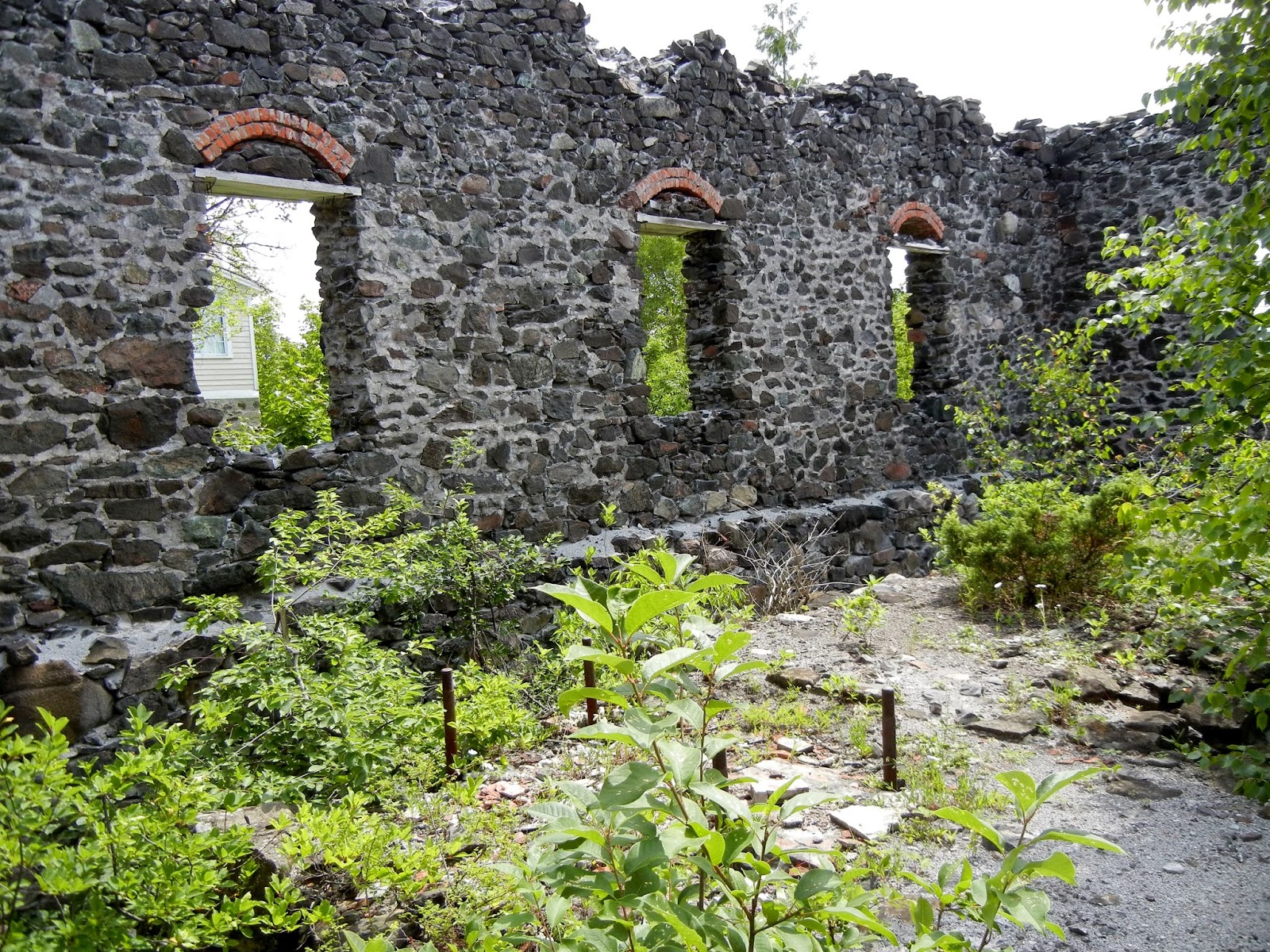Over the years, I have been fascinated by the waterfalls
and cemeteries of the Keweenaw Peninsula –the very top of Michigan’s UP. In the
past, I have visited and photographed as many waterfalls and cemeteries as I could
find. Who doesn’t love a good waterfall –
the water spilling over rocks and through crevasses? And you already know my
fascination with all cemeteries, but put me in the midst of old decaying
headstones and my imagination really takes off.
Yet there is one more aspect of the Keweenaw (pronounced
kee-wa-nah, by the way) to be explored. The mining ghost town.
 One of the most noteworthy historical sites in Keweenaw
County is Central, or Central Mine, a village whose population was once over
1,200 people. One the area’s most successful copper mines, mining began here in
1856. The mine's lode proved so rich that Central was able to turn a profit in
its first year of operation and by the time it closed in 1898, the Mine had produced
nearly 52 million pounds of copper.
One of the most noteworthy historical sites in Keweenaw
County is Central, or Central Mine, a village whose population was once over
1,200 people. One the area’s most successful copper mines, mining began here in
1856. The mine's lode proved so rich that Central was able to turn a profit in
its first year of operation and by the time it closed in 1898, the Mine had produced
nearly 52 million pounds of copper.
 One of the most noteworthy historical sites in Keweenaw
County is Central, or Central Mine, a village whose population was once over
1,200 people. One the area’s most successful copper mines, mining began here in
1856. The mine's lode proved so rich that Central was able to turn a profit in
its first year of operation and by the time it closed in 1898, the Mine had produced
nearly 52 million pounds of copper.
One of the most noteworthy historical sites in Keweenaw
County is Central, or Central Mine, a village whose population was once over
1,200 people. One the area’s most successful copper mines, mining began here in
1856. The mine's lode proved so rich that Central was able to turn a profit in
its first year of operation and by the time it closed in 1898, the Mine had produced
nearly 52 million pounds of copper.
The town was located in an ancient mining pit along an
outcrop below a Greenstone Bluff and boasted over 130 structures, including
mine buildings, homes, schools, businesses and the Central Methodist Church. In
1898 the mine ceased operation, and residents began leaving the town.
Several miners' homes and buildings still stand on the
site. In 1996, the Keweenaw County Historical Society acquired 38 acres of the
old Central site. Some of the residences are being restored, and a Visitors
Center provides interpretive exhibits not only about the mine but also about
the miners' families, homes, schools and churches.
Construction of the Central Methodist Church began in
1868. When it was occupied the following year, it became the major focal point
of religious and social life in the community for all who were members of it
and for many who were not. It was inevitable that there should be a close
feeling among the former residents of Central, who were forced to relocate to other
parts of the area following the closing of the mine in 1898. The opening of the
Keweenaw Central Railroad in January, 1907, provided an opportunity for the
old-timers to have a "homecoming." The last Sunday of every July
since then, the church has been host to a reunion of descendants of the
residents of Central as well as those with an interest in a time gone by.
 |
| This is the site of the old schoolhouse. |
 |
| Mining - an occupation filled with danger. |


+at+Central.JPG)





No comments:
Post a Comment